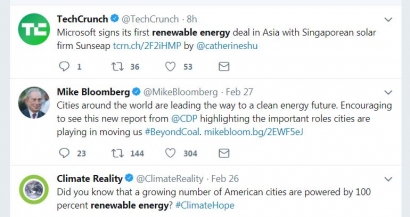
1. Assemble Stakeholders
It is critical to include stakeholder groups both locally and regionally in your project discussion. Local elected officials like to see community outreach. It is important to engage stakeholders to activate their contacts as part of the grassroots efforts as these groups can amplify messaging through newsletters, email blasts and presentations to the organization’s members. Coordinating a call to action with stakeholders can greatly enhance support in a meaningful way.
2. Rally your Supporters
Find real residents to support your project. Use social media accounts to locate supporters in the community and easily get in contact with them. Once you get in contact with supporters, ask them to attend a public hearing and speak in support of the renewable project. Direct supporters to your fact sheets and website so they have the latest information on the project and rules about making public comment. Sometimes providing some type of incentive to supporters for speaking at a public hearing helps.
3. Project Website
Prepare a thorough website that regularly updates residents, dispels new myths and disseminates the latest information. The website should be easy to navigate and contain up to date contact information. This website should also include a link that allows people to submit letters of support directly to public officials and elected leaders, and it should provide downloadable fact sheets along with any other resources that may help advocates build support.
4. Facebook Page
Having a Facebook page dedicated to the renewable project allows for direct feedback from the target audience and provides a platform for two-way communication. This Facebook page can serve as an online focus group where people can express their thoughts on the project. You can also host events, like project open houses, that can be advertised and RSVP’d to through this platform. The page should also link other useful sources and supporting research to help promote the project. Facebook Insights provide helpful information on audience demographics, post-performance and engagement on your page to ensure posts resonate.
5. Sharable Social Media Content
Creating quality and sharable content is a way to reach your target audience, educate the public and get them on board with your project. Any content posted should be bolstered as needed by social media marketing, which is both cost-efficient and effective to introduce the proposal to new audiences. Facebook has recently announced a change in its News Feed algorithm that will have a significant impact on marketers. The new algorithm will now reward authentic engagement, instead of passive likes or shares. That means pages and content that gain higher engagement rates will be prioritized over less engaging content. As a result, when creating that unique and sharable content for a renewable project, companies must keep in mind the audience it is trying to reach, and create content that caters to the audience’s interests accordingly to drive more meaningful interactions.
6. Create a #Hashtag
Create a consistent and unique project hashtag to share on all social sites. The hashtag should be relevant to the brand or project and be relatively short, so it is easily remembered. You will be able to monitor your project hashtag to get live feedback and respond to the people using it. Additionally, public officials and community members alike can search the hashtag for a live feed of chatter on the project.
7. Video and Aerial Drone Footage
Video is one of the most versatile and profitable digital marketing tools out there. According to 2017 video marketing statistics from Wyzowl, 79 percent of consumers would rather watch a video to learn about a product, than read text on a page. Creating a computer animated video on your project might be the extra push needed to get supporters involved or get the project to approval.
In recent years aerial drone footage of development projects has increased rapidly and is less expensive than other forms of aerial photography. Aerial drone footage of a renewable project will allow the public to visualize the project in a unique way. Aerial photography can be used in marketing brochures, social media accounts and websites. Footage can show the construction process through a video or GIF, or even use still images.
8. Run Digital Advertisements
Renewable companies can run paid advertisements across any social media platform. Pair the social media advertisements with the unique hashtag and content that has been created for the project to help spread positive messaging and encourage people to get involved. These ads will increase awareness and drive website traffic to continuously reach new segments of the local population.
9. Host an Open House
Hosting a community open house is a useful tactic because it allows residents one-on-one conversation with the project team. Residents can voice their concerns or ask questions and the company can tweak plans based on the public’s feedback. The open house should have four or five stations with experts on various topics. Each table should have drawings, handouts and any other relevant materials to the project.
10. Direct Mail
Although direct mail in large populated areas has become cost inefficient, in small rural areas it is still a great way to target new audiences and disseminate information about a renewable project to residents of your choice. When purchasing a direct mail file, make sure the information is updated and accurate. Often our firm will purchase a resident and voter file and cross match them. Voters tend to be more active civically than non-voters.
Al Maiorino started Public Strategy Group, Inc. in 1995. His firm has developed and managed multiple corporate public affairs campaigns in a variety of industries such as gaming, cable television, retail development, auto racing, energy and residential projects. Additionally, his firm has worked on projects in twenty states and three countries.

